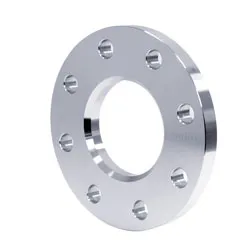-
Cangzhou Yulong Steel Co., Ltd.
-
Phone:
+86 13303177267 -
Email:
admin@ylsteelfittings.com
- English
- Arabic
- Italian
- Spanish
- Portuguese
- German
- kazakh
- Persian
- Greek
- French
- Russian
- Polish
- Thai
- Indonesian
- Vietnamese
- Zulu
- Korean
- Uzbek
- Hindi
- Serbian
- Malay
- Ukrainian
- Gujarati
- Haitian Creole
- hausa
- hawaiian
- Hebrew
- Miao
- Hungarian
- Icelandic
- igbo
- irish
- Japanese
- Javanese
- Kannada
- Khmer
- Rwandese
- Afrikaans
- Albanian
- Amharic
- Armenian
- Azerbaijani
- Basque
- Belarusian
- Bengali
- Bosnian
- Bulgarian
- Catalan
- Cebuano
- China
- China (Taiwan)
- Corsican
- Croatian
- Czech
- Danish
- Esperanto
- Estonian
- Finnish
- Frisian
- Galician
- Georgian
- Kurdish
- Kyrgyz
- Lao
- Latin
- Latvian
- Lithuanian
- Luxembourgish
- Macedonian
- Malgashi
- Malayalam
- Maltese
- Maori
- Marathi
- Mongolian
- Myanmar
- Nepali
- Norwegian
- Norwegian
- Occitan
- Pashto
- Dutch
- Punjabi
- Romanian
- Samoan
- Scottish Gaelic
- Sesotho
- Shona
- Sindhi
- Sinhala
- Slovak
- Slovenian
- Somali
- Sundanese
- Swahili
- Swedish
- Tagalog
- Tajik
- Tamil
- Tatar
- Telugu
- Turkish
- Turkmen
- Urdu
- Uighur
- Welsh
- Bantu
- Yiddish
- Yoruba

Dec . 23, 2024 06:05 Back to list
mild steel mandrel bends
Understanding Mild Steel Mandrel Bends
Mild steel mandrel bends play a crucial role in various industries, particularly in engineering, automotive, and construction. These bends are crafted from mild steel, a versatile and cost-effective material that exhibits excellent weldability and machinability, making it a popular choice for structural applications. In this article, we will explore what mild steel mandrel bends are, their properties, advantages, applications, and the bending process involved in their fabrication.
What Are Mild Steel Mandrel Bends?
Mandrel bends are a specific type of bend characterized by the use of a mandrel, an internal support inserted into the pipe or tube during the bending process. This support prevents the material from collapsing or deforming, ensuring a smooth and consistent curvature. Mild steel refers to steel with a low carbon content (typically 0.05% to 0.25%), which makes it softer and more ductile compared to other steel types. This combination of mild steel and mandrel bending allows for the creation of complex shapes and patterns without compromising the integrity of the material.
Properties of Mild Steel
Mild steel possesses several properties that make it suitable for bending and various construction applications. Its moderate tensile strength allows it to withstand stress while being pliable enough to be formed into different shapes. Furthermore, its corrosion resistance can be enhanced through galvanization or painting, making it suitable for outdoor and industrial environments. The cost-effectiveness of mild steel, combined with its availability, makes it a preferred choice for many engineers and architects.
Advantages of Using Mild Steel Mandrel Bends
1. Structural Integrity The primary advantage of using mandrel bends is that they maintain the structural integrity of the pipe or tube. By avoiding kinks and sharp bends, mandrel bending ensures that flow and material strength are preserved.
2. Versatility Mild steel mandrel bends can be used in various applications, ranging from exhaust systems in vehicles to handrails in buildings. Their adaptability makes them invaluable in multiple sectors.
3. Aesthetic Appeal Smooth, contoured bends not only function well but also add to the overall aesthetics of a design. This is particularly important in architecture and product design, where visual appeal can be as crucial as functionality.
4. Cost-Effective Solutions Compared to other metals, mild steel is generally more affordable. The availability of mild steel helps reduce the overall costs of construction and manufacturing projects.
Applications of Mild Steel Mandrel Bends
Mild steel mandrel bends are utilized in numerous industries. Below are some prominent applications
mild steel mandrel bends

- Automotive Industry They are essential in exhaust systems, as the bends can route exhaust gases smoothly, enhancing engine performance while maintaining the vehicle's aesthetic.
- Piping Systems Mild steel mandrel bends are commonly used in piping systems for providing transition sections and for connecting pipes at various angles without stressing the material
.- Construction In architectural applications, these bends create elegant handrails and structural supports, showcasing both practicality and design value.
- Furniture Design Furniture designers frequently use mild steel mandrel bends to craft unique, modern pieces that feature soft curves and functionality.
The Bending Process
The process of creating mild steel mandrel bends typically involves the following steps
1. Material Preparation Mild steel strips or tubes are cut to the required length based on design specifications.
2. Mandrel Insertion A mandrel is placed inside the tube to support it during the bending process.
3. Bending Using specialized machinery such as CNC bending machines, the tube is gradually bent into the desired shape. The mandrel ensures uniform curvature without deformation.
4. Cutting and Finishing After bending, the tube is cut to the specified length and may undergo additional finishing processes such as welding or surface treatment to enhance its durability and appearance.
Conclusion
Mild steel mandrel bends are an essential component in various engineering applications due to their durability, versatility, and aesthetic qualities. Understanding the properties and advantages of mild steel, along with the process of creating these bends, can greatly enhance the design and functionality of products across multiple industries. As technology advances and design demands evolve, mild steel mandrel bends will continue to be a reliable choice for engineers and designers alike.
Latest news
-
ANSI 150P SS304 SO FLANGE
NewsFeb.14,2025
-
ASTM A333GR6 STEEL PIPE
NewsJan.20,2025
-
ANSI B16.5 WELDING NECK FLANGE
NewsJan.15,2026
-
ANSI B16.5 SLIP-ON FLANGE
NewsApr.19,2024
-
SABS 1123 FLANGE
NewsJan.15,2025
-
DIN86044 PLATE FLANGE
NewsApr.19,2024
-
DIN2527 BLIND FLANGE
NewsApr.12,2024
-
JIS B2311 Butt-Welding Fittings LR/SR 45°/90° /180°Seamless/Weld
NewsApr.23,2024











